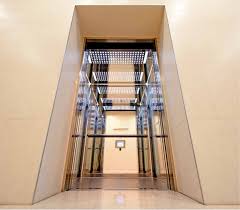Why Old Elevator Parts Still Matter: Preserving Vertical Mobility in Historic Buildings

Old buildings tell stories and sometimes, so do their elevators. But when these vertical transport systems age, many property owners face a dilemma: upgrade completely, or preserve and restore using old elevator parts? In this article, we explore why original elevator components still matter, especially for historic preservation and regulatory compliance.
1. The Role of Old Elevator Parts in Historic Preservation
Historic buildings whether government facilities, universities, or landmark hotels are often protected by heritage conservation laws. Replacing original elevator parts with modern alternatives can violate preservation codes. By sourcing and installing compatible old elevator parts, building owners maintain authenticity while ensuring safety. Maintaining ADA compliance is also a key concern when working with older systems. Learn more about ADA elevator requirements for existing buildings to ensure accessibility isn’t compromised during restoration.
2. Engineering Compatibility in Older Systems
Some vintage elevators were custom-built with unique mechanical systems. Modern components often don’t fit or function correctly. Using original or reconditioned parts ensures seamless integration, avoiding costly redesigns or system failures.
3. Cost-Effective Elevator Maintenance
Full modernization projects can run into six figures. In many cases, sourcing tested, re-certified old elevator parts can extend system life at a fraction of the cost. This appeals to budget-conscious property managers and small-building owners.
4. Sustainability Through Reuse
Reusing old elevator parts aligns with green building standards and sustainability goals. Instead of scrapping old systems, reusing viable components reduces landfill waste and supports circular economy practices in the construction sector.
5. Finding Authentic Old Elevator Parts: What to Look For
- OEM identification marks (Otis, Dover, Schindler, etc.)
- Compatibility with vintage control systems
- Certified refurbishing for safety compliance: Certified refurbishing for safety compliance is essential when sourcing vintage components. For a deeper understanding of replacement part options, read our guidelines for elevator replacement parts.
- Vendor reputation in the elevator consulting industry
6. The Consultant’s Edge: Why Experts Rely on Legacy Parts
Elevator consultants frequently recommend old parts when they meet compliance standards. This strategy ensures minimal downtime, reduced retrofit costs, and preservation of historical value all critical for building stakeholders.
Old elevator parts are more than relics they are functional assets for building owners seeking performance, compliance, and preservation. Whether you’re a facility manager or elevator consultant, understanding their value could help you make smarter, cost-effective decisions.
Need help sourcing reliable old elevator parts or navigating code compliance? Contact our certified elevator consultants today.
